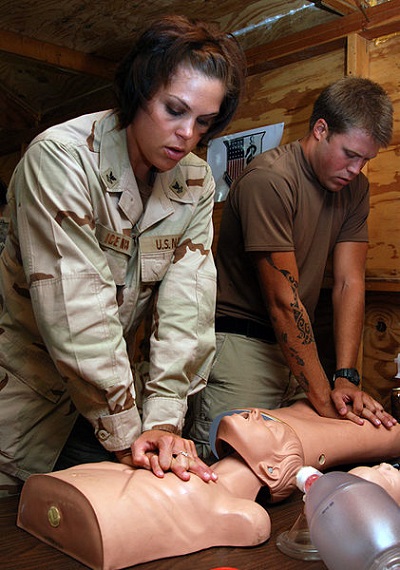The startup is currently driving forward at a rapid rate and intends to be huge in the not-too-distant future.
Magic Leap, a company that has already managed to raise about half a billion dollars from some massive tech giant investors have been working on secret technology for years now and it now looks as though augmented reality is going to be a central component to its future.
Its own version of computing over mixed reality is causing them to prepare for millions of gadgets.
The company, which has even received investment dollars from Google, is “gearing up to build millions of things,” said its president and CEO, Rony Abovitz. It is currently running part of its operations in Florida out of an abandoned Motorola factory and Abovitz said that it has begun manufacturing. “We’re not ready to announce when we’re shipping, but it gives you a signal that we’re not far,” he said. While not much is actually known about the device being created by the company, what is believed is that it will be a small sized computer that is self contained and that will likely include augmented reality as it is meant to be something that consumers will be comfortable using while in public.
Aside from augmented reality, it might also involve the use of retinal projection and was developed through surgical research.
 Once the Magic Leap device arrives, it is very likely that it will be in direct competition with the HoloLens from Microsoft, which is already taking development kit applications. The HoloLens is wearable technology that uses augmented reality and that has been in development for some time.
Once the Magic Leap device arrives, it is very likely that it will be in direct competition with the HoloLens from Microsoft, which is already taking development kit applications. The HoloLens is wearable technology that uses augmented reality and that has been in development for some time.
According to Abovitz, when it comes to his own company’s devices, “Anything you can do on a smartphone, you can do on Magic Leap.” This gadget also has a working software development kit and it has issued invitations to a number of development teams to start to make mobile apps that will be compatible with the tech. It also holds hackathons on a regular basis at its Florida offices.
So far, the mobile apps that have been built for the Magic Leap device include basic games that allow an augmented reality ball to be thrown back and forth, as well as an application that projects a digital hand and stove that provides directions for making macaroni and cheese.
The instructions have now been updated by the Red Cross and American Heart Association.
If most people were asked what to do in case of an emergency, the answer would be to dial 9-1-1, and while this should be easier than ever before with the penetration of mobile technology throughout virtually every part of the population, when someone suffers a heart attack, many people still freeze up and delay before this critical step is taken.
The CPR guidelines have now been updated so that mobile technology plays a part when it can.
More specifically, the American Heart Association and Red Cross have pointed out that mobile technology can allow bystanders to take part in helping out in the situation. The goal is to save more lives. According to the new guidelines, after 9-1-1 has been called, the phone can be used in its speaker function and rested down so that the individual can still speak to the operator, regardless of whether or not their hands are busy.
The goal is to use mobile technology to help to reduce some of the fear felt by people making the call.
 According to Dr. Lawrence Phillips from the American Heart Association, “Some of that fear is resolved when you hear a voice telling you what to do and what the next step is.” It also points out that the individual doesn’t actually need to be trained in CPR to be able to help out in an emergency situation in which someone has had a heart attack.
According to Dr. Lawrence Phillips from the American Heart Association, “Some of that fear is resolved when you hear a voice telling you what to do and what the next step is.” It also points out that the individual doesn’t actually need to be trained in CPR to be able to help out in an emergency situation in which someone has had a heart attack.
Some of the guidelines also point out that there are many mobile apps that can be used to help cardiac arrest victims so that assistance can begin as rapidly as possible. One example of a very beneficial way in which mobile devices can help when someone has gone into cardiac arrest is in the form of a non-profit called PulsePoint. That organization is currently in over 1,300 different communities.
It works when someone dials 9-1-1 for a situation that sounds like a cardiac emergency. When this happens, it alerts anyone nearby who has CPR training and who has the mobile app on their smartphone. This use of mobile technology can help to ensure that someone trained to provide CPR will be there as quickly as possible. Beginning CPR early can double or triple the chances of survival for someone who is suffering a heart attack. The app can also show people where the nearest automated external defibrillator can be found.
 Once the Magic Leap device arrives, it is very likely that it will be in direct competition with the HoloLens from Microsoft, which is already taking development kit applications. The HoloLens is wearable technology that uses augmented reality and that has been in development for some time.
Once the Magic Leap device arrives, it is very likely that it will be in direct competition with the HoloLens from Microsoft, which is already taking development kit applications. The HoloLens is wearable technology that uses augmented reality and that has been in development for some time.
 According to Dr. Lawrence Phillips from the American Heart Association, “Some of that fear is resolved when you hear a voice telling you what to do and what the next step is.” It also points out that the individual doesn’t actually need to be trained in CPR to be able to help out in an emergency situation in which someone has had a heart attack.
According to Dr. Lawrence Phillips from the American Heart Association, “Some of that fear is resolved when you hear a voice telling you what to do and what the next step is.” It also points out that the individual doesn’t actually need to be trained in CPR to be able to help out in an emergency situation in which someone has had a heart attack.